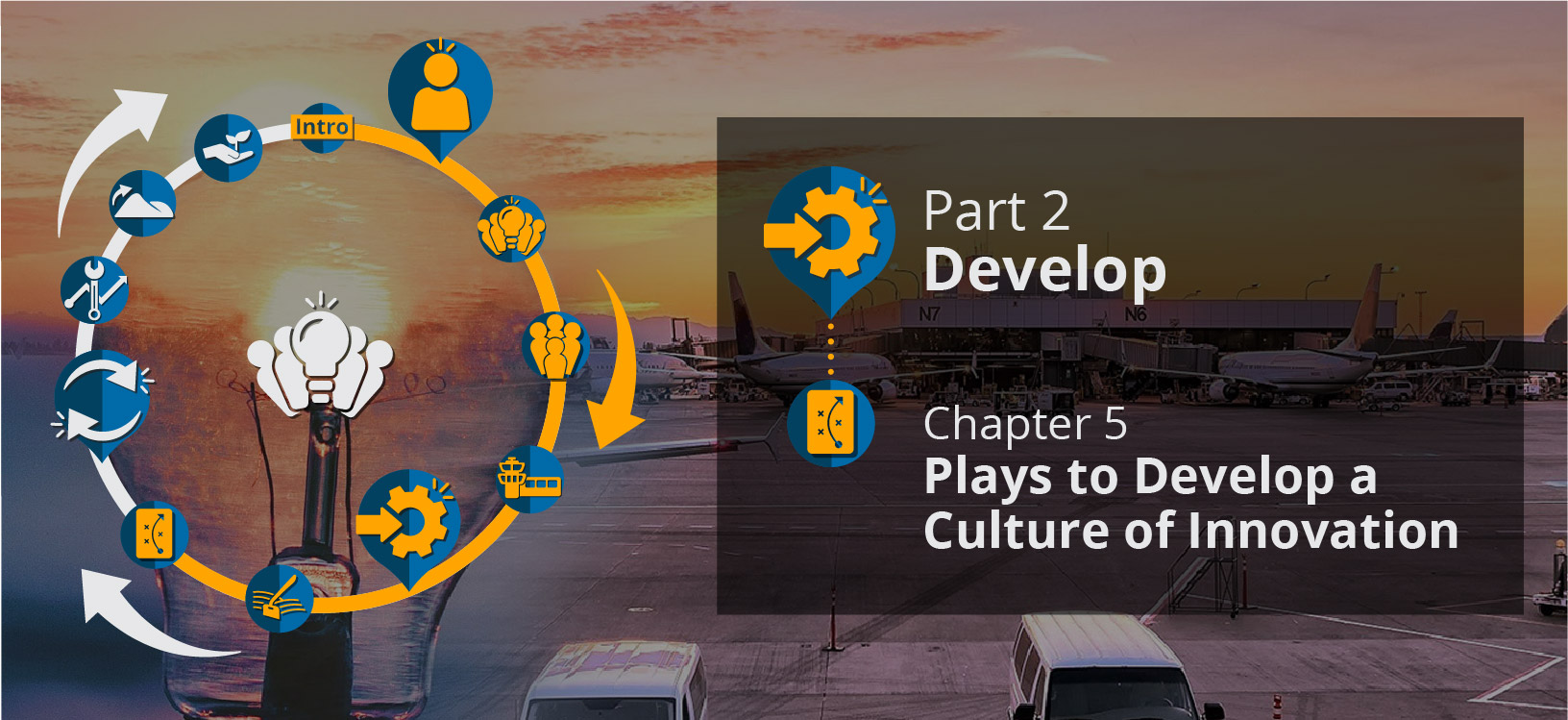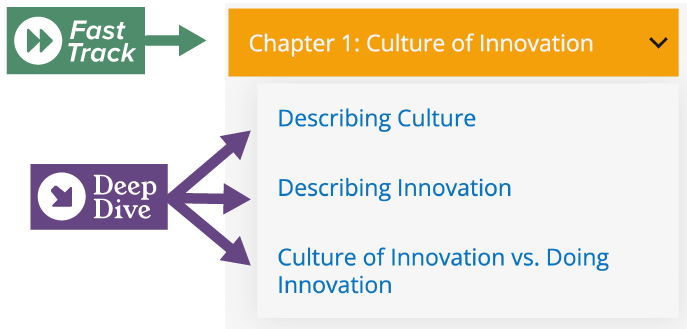

This is a Deep Dive page. Select the chapter for the Fast Track
Play 9: Focus on Behaviors that Support Change (Staff)
Innovative staff value change and the new experiences and opportunities it offers. They have aligned their internal values with those of an innovative mindset and are ready to tackle challenges by asking the right questions, getting properly equipped through training, and trying new ways to break down barriers to change.
Ask “Why” and “What If” Questions
As people grow and mature from children into adults, they begin asking fewer questions-“a child asks as many as 25 questions per hour,” but the number of questions steadily drops off as they grow up.1 Thus, it is important to get back into the habit of having childlike curiosity about things and asking questions.
Innovative staff
- Spark innovation with questions. To keep up with today's fast pace and changing landscape, asking questions can help keep people focused on what is next. A great example of this is the inspiration for the Polaroid camera. The three-year-old daughter of Polaroid inventor Edwin H. Land wanted to see the photo right after it was taken. However, when Land tried to explain that the film had to be processed first, his daughter asked, “Why do we have to wait?”2
- Ask the right types of questions. Keep questions open-ended, and try to get to the root of issues. “Why” and “what if” questions meet both of these criteria. Ask these types of questions often; inspire leaders to ask the same types of questions as well.
Agility Training and Tools
Innovative staff know that an airport needs to remain agile and open to change. They need to continually work to help their airport overcome the tendency toward the status quo and move toward innovation. They
- Learn about agility training. Agility training is a “bottom-up” and “inside-out” approach to improving innovation. It is suitable for all employees in an organization. This approach helps people understand and overcome cognitive biases that get in the way of creativity and innovation. It consists of investigating, designing, energizing, and applying new ideas.
- Advocate for agility training. Recommend this type of training to leaders to help break through habitual thinking and find new ways of exploring things.
How to Break Through a Change-Resistant Culture
Innovative staff know the people who are most change-averse in an organization are not usually frontline employees but mid- to upper-level management. Managers can tend to exhibit elements of the negative personas described in Chapter 2 (i.e., inhibitors or destroyers). They tend to be less open to change, as they may be more focused on how change could affect their power or prestige. Before taking a risk and trying to break through any resistance, innovative staff prepare themselves and their management before respectfully bringing up or challenging new ideas in a nonthreatening way.
Innovative staff
- Change minds, one at a time. Ask questions of leaders that lead to the desired topic, whether in one-on-one discussions or in meetings. Listen to leaders first, talk second, and then communicate the need to change by showing enthusiasm for the proposed change while demonstrating how it will benefit the leader. Benefits may come from increased productivity or reduced costs, all of which make leaders look better to their superiors. Show leaders data to confirm the need for change whenever possible. Be prepared to respectfully challenge pushback, and consider approaching the ideas for change in stages to prevent overloading leaders. Gently remind leaders to focus on the bigger picture. Use illustrations to demonstrate how change can impact and benefit not only individuals but also the airport and, ultimately, the customer, which drives everyone's success.
- Bring in the troops. Encourage leaders in a change-resistant culture to regularly reach out and share information across departments, which can build trust and relationships, enabling more safe conversations to happen in the future. Also encourage leaders to create cross-organizational teams or a dedicated culture of innovation team, as discussed in Chapter 4. These teams can be used to break down boundaries and encourage communication among different units. Whenever innovative staff can help establish these types of teams, it can serve to bring the organization together in a more productive way. These teams can be used to build comradery and unity when trying to implement change.

1 Paul Harris, “What Children Learn from Questioning,” Educational Leadership, vol. 73, pp. 24-29, September 2015.
2 Emma Taggart, “Get an 'Instant' History of How Polaroid Revolutionized Photography,” My Modern Met, June 15, 2020, https://mymodernmet.com/history-of-polaroid/.

